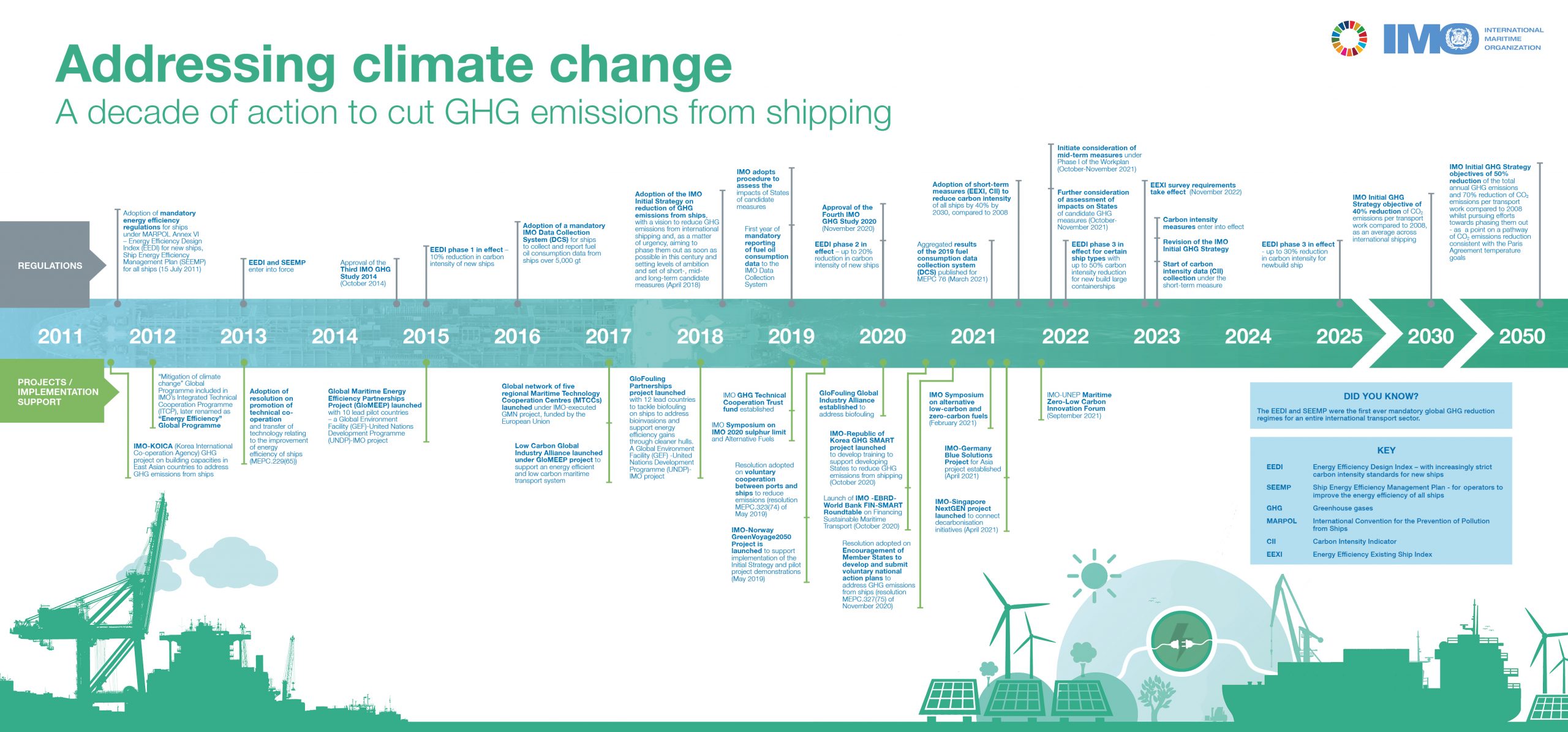IMO scales up environmental and labour requirements
All sectors must consider the human workforce at the heart of shipping and ensure seafarers’ rights are protected. Promoting diversity in the maritime sector is another goal. By actively empowering women with the requisite skills and maintaining a barrier-free working environment, we create truly sustainable systems of gender equality.
Undoubtedly, we will see more and more ships with varying levels of autonomy. A regulatory framework must be provided to ensure that as autonomy becomes more commonplace, safety and protection of the marine environment are not sacrificed. This is why IMO is developing a goal-based instrument for Maritime Autonomous Surface Ships, often referred to as MASS. Further, with increased automation comes the need to address cyber security threats, and IMO continues to work to confront those threats.
UN Sustainable Development Goals are also coming on top of the agenda of the entire shipping industry. The latest IMO study on GHG is the Fourth IMO Greenhouse Gas Study (2020), in which CO2 emissions are estimated to have increased from 701 million tons in 2012 to 740 million tons in 2018 accounting for approximately 2% of global CO2 emissions.
IMO: the standard-setting body
The disruptions of the last 2 or 3 years have caused major commercial and product losses in reefer transportation, with no clear responsibility taken by the shipping lines. In this context IMO does not have a remit to “force” shipping lines to undertake better practices, but it is important to recall that IMO is the standard-setting body for shipping. IMO is a specialised agency of the United Nations. Its 175 Member States develop and adopt regulations for shipping (as well as relevant guidance, recommendations and so on). Any mandatory regulation must be applied by shipping. The enforcement of these rules falls to the States based on relevant treaties. This includes: flag States, which survey and certify ships; port States, which have the right to inspect ships of any flag and to enforce compliance with international standards; and coastal States, which have rights as well.
The IMO International Convention on Standards of Training, Certification and Watchkeeping for Seafarers (STCW) includes, for examples, requirements for hours of work and rest for seafarers. Shipping companies should ensure these are adhered to. The mandatory IMO International Management Code for the Safe Operation of Ships and for Pollution Prevention (International Safety Management (ISM) Code) requires good management to be put in place. It includes assessment of all identified risks to the Company’s ships, personnel and the environment and establishment of appropriate safeguards. The ILO Maritime Labour Convention (MLC) treaty protects workers’ rights in shipping and IMO works jointly with ILO on a number of relevant issues.
For more information: https://www.imo.org/en/OurWork/Legal/Pages/JointIMOILOWorkingGroupsOnSeafarerIssues.aspx
Workforce and labour responsibilities at the heart of shipping
Companies involved in shipping should consider their responsibilities to the human workforce at the heart of shipping – the seafarers. The UN Global Compact (UNGC), the Office of the High Commissioner for Human Rights (UN Human Rights), the International Labour Organization (ILO) and the International Maritime Organization (IMO) have developed a due diligence tool – which is a wide-ranging set of guidance to help enterprises using shipping services to protect the human rights of seafarers. The Due Diligence Tool for cargo owners and charterers aims to ensure that seafarers have their rights safeguarded in areas such as physical and mental health, access to family life and freedom of movement. The tool provides guidance and a checklist for cargo owners, charterers and logistic providers to conduct human rights due diligence across their supply chains to identify, prevent, mitigate and address adverse human rights impacts. This was developed for seafarers impacted by the COVID-19 crisis, but has relevance even as the COVID-19 crisis has somewhat eased.
IMO as part of the UN Family to support sustainable goals
As part of the UN family, IMO supports all measures designed to support the implementation of the UN Sustainable Development Goals (SDGS). The UN Global Compact is the UN’s arm which calls on companies to align strategies and principles with universal principles on human rights, labour, environment and anti-corruption. The UN Global Compact encourages supply chain sustainability. A company’s entire supply chain can make a significant impact in promoting human rights, fair labour practices, environmental progress and anti-corruption policies. The UN Global Compact encourages companies to make sustainability a priority from the top of the organization. If the chief executive sees the supply chain as an extension of their workforce and community, the company can set expectations for best practices across its supply chain. These can include key areas such as selection, training, auditing and remediation.
The UN Global Compact develops further guidance, such as the Decent Work Toolkit for Sustainable Procurement, the Guide to Traceability and the Practical Guide for Continuous Improvement to assist companies in developing more sustainable supply chain practice.
See more here : https://unglobalcompact.org/what-is-gc/our-work/supply-chain
Goals, solutions and time-frame to start curbing emissions
Alternative ow and zero-carbon fuels are already being trialled and we see new ships being ordered with the potential to use non-carbon fuels. The IMO Initial Strategy on the Reduction of GHG Emissions from shipping, adopted in 1018, set goals which imply a move to new fuels. Meanwhile a revised strategy is set to be adopted in July 2023, since low and zero-carbon fuels are fully needed to decarbonise shipping. There is great potential for developing countries to become key suppliers of low and zero carbon fuels for shipping. More about it can be read here: 2022 IMO Symposium on alternative fuels for shipping.
For different fuel options, there is a need to consider issues such as safety, regulation, pricing, infrastructural availability, lifecycle emissions, supply chain constraints, barriers to adoption and more. Potential future fuels and propulsion for shipping include: ammonia, biofuels, electric power, fuel cells, hydrogen, methanol and wind.
There is no doubt that the whole lifecycle needs to be looked at for each alternative. A candidate measure in the IMO Initial GHG Strategy refers to developing “robust lifecycle GHG/carbon intensity guidelines for all types of fuels, in order to prepare for an implementation programme for effective uptake of alternative low-carbon and zero-carbon fuels”.
Lifecycle of alternative fuels still to be clearly assessed
The lifecycle refers to the assessment of greenhouse gas emissions from the fuel production to the ship (Well-to-Wake); from primary production to carriage of the fuel in a ship’s tank (Well-to-Tank, also known as upstream emissions) and from the ship’s fuel tank to the exhaust (Tank-to-Propeller or Tank-to-Wake, also known as downstream emissions). Candidate future low-carbon and zero-carbon fuels for shipping have diverse production pathways (for example, different generations of biofuels, hydrogen-based fuels, etc.) entailing significant differences in their overall environmental footprint. There is likely to be a future mix of different fuels being used, perhaps in different trades and routes. This picture will be clearer over time. In the meantime, there is lot that shipping can do to improve energy efficiency through operational measures, such as: hull cleaning to reduce drag; speed and routing optimisation; installation of low-energy light bulbs; installation of solar/wind auxiliary power for accommodation services.
Such measures can help ships improve their carbon intensity rating under new rules introduced from 2023, the attained Energy Efficiency Existing Ship Index (EEXI) for existing ships (or EEDI Energy Efficiency Index new ships fully using new alternatives), to determine a ship’s energy efficiency, and the annual operational Carbon Intensity Indicator (CII) and associated CII rating. Carbon intensity links the GHG emissions to the amount of cargo carried over distance travelled.
Digitalisation is also happening
New requirements in the Facilitations Convention will make the maritime single window mandatory from 1 January 2024. The amendments to the annex of the Convention will make it mandatory for public authorities to establish, maintain and use single window systems for the electronic exchange of information required on arrival, stay and departure of ships in ports. In addition, public authorities will have to combine or coordinate the electronic transmission of the data, to ensure that information is submitted or provided only once and reused to the maximum extent possible. This is an opportunity for the entire shipping chain. IT will improve efficiency in ports for ships stay and departure.







